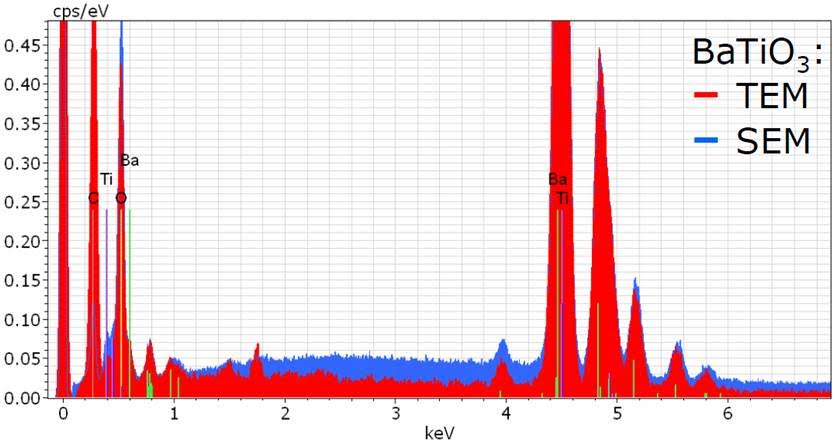Background in EDS Map and Profile & its Corrections/Subtraction - Practical Electron Microscopy and Database - - An Online Book - |
|||||||||||||||||||||||||||||||||||||||||||||||||||||
| Microanalysis | EM Book http://www.globalsino.com/EM/ | |||||||||||||||||||||||||||||||||||||||||||||||||||||
Incident electrons in EMs can undergo deceleration in the Coulomb field of the specimen atoms. This is the positive field of the nucleus modified by the negative field of an electron cloud. When the incident electrons interact with the Coulomb field, the electrons are scattered inelastically, resulting in EDS background. The background is not linear, and a simple interpolation is not sufficient. One of the most important factors for X-ray element analytical techniques is the minimum detection limit. A principal factor determining the detection limits and errors, as indicated in the list above, is the degree of continuous background in the measured X-ray spectra since the X-ray spectrum recorded by EDS systems is composed of both the characteristic peaks and continuum background. In general, the background of EDS map and profile originates from stray radiation in the EM column and bremsstrahlung X-rays. The bremsstrahlung from the projectile or secondary electrons and atomic bremsstrahlung are the most important sources of the continuous X-ray background. For heavier projectiles and higher electron energies, the Compton tails of the X-rays start to contribute extremely. The bremsstrahlung radiation depends slightly on energy, especially for thin specimens where multiple scatterings of the high-energy electron are negligible. For the same reason, the TEM-EDS background is normally lower than that of SEM-EDS on bulk materials (see page4532). However, in practice, the background becomes zero at the low end of the spectrum because of absorption by the detector dead layer and the detector window.
The background needs to be removed before the peak intensities are obtained. In the analysis of an EDS data, a power series in energy is normally used to model the background. Basically, there are two main methods to remove the background from the measured spectral distribution: Some other techniques can also be used to subtract the background depending on the shapes of the peak and background. For instance:
The peak integration can be done either by fitting a Gaussian profile or by using reference spectra that have been recorded previously and stored in the computer. If there is a peak overlap, it is better to deal with sets of peaks (e.g. Kα, Kβ, L-series) with the energies and relative intensities between elements. The background counts in TEM-EDS are much lower than those in SEM-EDS spectrum. Due to the high background counts in SEM-EDS, an artificial carbon (C) peak is always visible and thus a value of more than 2% carbon is normally measured even though there is no carbon in the specimen. This artefact is due to the window in the detector. The EDS windows are normally SATW windows and their material has a specific transmission profile with a strong absorption edge just above but very close to the C X-ray energy, resulting in an artificial peak at the C energy position. Therefore, it is the strong absorption of the background (continuum) X-rays that produces the artefact peak. Note that SATW detector windows are AP* ultrathin polymer windows manufactured by Moxtek and are almost supplied by all EDS detector companies. However, a TEM-EDS spectrum taken from the same specimen materials does not show such a artefact peak at the carbon energy because the spectrum consists mostly of characteristic X-rays. There are basically two different methods used in EDS software to correct and subtract the background of EDX spectra as listed in Table 3918a. In modern EDS software, the background including many factors such as the collection efficiency of the detector, the processing efficiency of the detector and the absorption of X-ray within the specimen can be modeled. However, in practice, no software with different models can perform perfect subtraction of background. Therefore, it is very useful that the quantified results obtained from different software is compared. Table 3918a. Background subtraction of EDX spectrum used in EDS software.
It is necessary to highlight that except for the random errors from counting statistics, some factors, however, will contribute systematic errors. Those factors are mainly: Two approaches are normally used in EDS systems today: Table 3918b. Some special cases of total background.
[1] Ralf Terborg, Bruker.
|
|
||||||||||||||||||||||||||||||||||||||||||||||||||||
